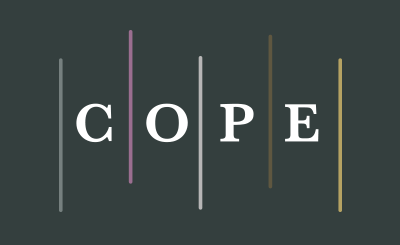The atheroprotective effects of genistein in hypercholestrolemic male rabbit
DOI:
https://doi.org/10.22317/jcms.v4i4.488Keywords:
Genistein, Atherosclerosis, InflammationAbstract
Objective The occurrence of this disease is related to different risk factors such as cardiovascular issues and elevated levels of plasma
cholesterol, hypertension, diabetes mellitus and many others.
Methods Three groups of domestic male rabbits, six in each group, were studied. Each group constituted a different diet condition where
group I had a normal chow diet; group II a 1% cholesterol-diet, group III a 1% cholesterol-diet and Genistein. The level of serum total
cholesterol (TC), triglycerides (TG) and HDL-C serum interleukin-6 (IL-6), serum high sensitive C-reactive protein (hs-CRP), serum monocyte
chemo-attractant protein type 1 (MCP-1) and HMG-box1 was monitored by collecting blood samples at the start of the study, 28 and 56 days.
Then, the aorta was removed to be examined (histopathology) for atherosclerosis lesion and thickening in the aortic intima-media.
Results In comparison to the control group (I), levels of TC, TG, low-density lipoprotein (LDL) cholestrol, very LDL cholestrol, hs-CRP, IL-6,
MCP-1 and HMG-box1 had increased while serum HDL-C had reduced in the animals that followed a high-fat diet. Histologically, the aortic
intimal thickening and atherosclerosis lesions has increased in the induced-untreated animals. The Genistein treated group showed a
substantial decrease of lipid parameters in comparison with the induced-untreated group. Genistein counteracted the changes in hs-CRP,
IL-6, MCP-1 and HMG-box1 in compared with the induced-untreated group (P < 0.05). Histomorphometric measurements indicated that
Genistein significantly minimizes the thickness of the aortic intima-media and atherosclerosis lesions in comparison to the animals on a
high-fat diet.
Conclusion The outcomes of this investigation show that Genistein significantly decrease the progression of atherosclerosis in
hypercholesterolemic animals via inhibition of inflammatory markers and reduced levels of lipid parameters.
References
2. Alexander RW, Dzau VJ. Vascular biology: the past 50 years. Circulation. 2000;102:IV112–IV116.
3. Banach M, Serban C, Sahebkar A, Mikhailidis DP, Ursoniu S, Ray KK et al. Impact of statin therapy on coronary plaque composition: a systematic review and meta-analysis of virtual histology intravascular ultrasound studies. BMC Med. 2015;13:229.
4. Collins R, Armitage J, Parish S, Sleigh P, Peto R, Heart Protection Study Collaborative Group. MRC/BHF Heart Protection Study of cholesterol-lowering with simvastatin in 5963 people with diabetes: a randomised placebo-controlled trial. Lancet. 2003 Jun 14;361:2005–2016.
5. Steffel J, Lüscher TF. Predicting the development of atherosclerosis. Circulation. 2009;119:919–921.
6. Aziz M, Yadav K. Diagnosis and treatment. Med Clin Rev. 2016;2.
7. Taketomi Y, Murakami M. Phospholipase A2 as a potential drug target for airway disorders. Obstructive Airway Diseases: Role of Lipid Mediators. 2016:41.
8. Corrado E, Rizzo M, Coppola G, Fattouch K, Novo G, Marturana I, et al. An update on the role of markers of inflammation in atherosclerosis. J Atheroscler Thromb. 2010;17:1–11.
9. Shafi Dar M, Pandith AA, Sameer AS, Sultan M, Yousuf A, Mudassar S. hs-CRP: a potential marker for hypertension in Kashmiri population. Indian J Clin Biochem. 2010;25:208–212.
10. Rutter MK, Meigs JB, Sullivan LM, D’Agostino RB, Wilson PW. C-reactive protein, the metabolic syndrome, and prediction of cardiovascular events in the Framingham Offspring Study. Circulation. 2004;110:380–385.
11. Munro JM, Cotran RS. The pathogenesis of atherosclerosis: atherogenesis and inflammation. Lab Invest. 1988;58:249–261.
12. Gerszten RE, Garcia-Zepeda EA, Lim YC, Yoshida M, Ding HA, Gimbrone MA et al. MCP-1 and IL-8 trigger firm 184 adhesion of monocytes to vascular endothelium under flow conditions. Nature. 1999;398:718–723.
13. Dewberry R, Holden H, Crossman D, Francis S. Interleukin-1 receptor antagonist expression in human endothelial cells and atherosclerosis. Arterioscler Thromb Vasc Biol. 2000;20:2394–2400.
14. GarcÃa DC, Valdecantos PA, Miceli DC, Roldán-Olarte M. Genistein affects proliferation and migration of bovine oviductal epithelial cells. Res Vet Sci. 2017;114:59–63.
15. Incir S, Bolayirli IM, Inan O, Aydın MS, Bilgin IA, Sayan I, et al. The effects of genistein supplementation on fructose induced insulin resistance, oxidative stress and inflammation. Life Sci. 2016;158:57–62.
16. Stary HC. Natural history and histological classification of atherosclerotic lesions: an update. Arterioscler Thromb Vasc Biol. 2000;20:1177–1178.
17. Prasad K, Lee P. Suppression of hypercholesterolemic atherosclerosis by pentoxifylline and its mechanism. Atherosclerosis. 2007;192:313–322.
18. de Nigris F, Mancini FP, Balestrieri ML, Byrns R, Fiorito C, Williams-Ignarro S, et al. Therapeutic dose of nebivolol, a nitric oxide-releasing betablocker, reduce atherosclerosis in cholesterol-fed rabbits. Nitric Oxide. 2008;19:57–63.
19. Eftekhari MH, Honarvar NM, Rajaeefard A, Owji A. Effect of daidzein and genistein on serum glucose, lipid profile and paroxonase activity in diabetic rats. Curr Top Nutraceutical Res. 2014;12:85–90.
20. Tang C, Zhang K, Zhao Q, Zhang J, Effects of dietary genistein on plasma and liver lipids, hepatic gene expression, and plasma metabolic profiles of hamsters with diet-induced hyperlipidemia. J Agric Food Chem. 2015;63:7929–7936.
21. Zhao SP, Wu ZH. Atorvastatin reduces serum leptin concentration in hypercholesterolemic rabbits. Clin Chim Acta. 2005;360:133–140.


